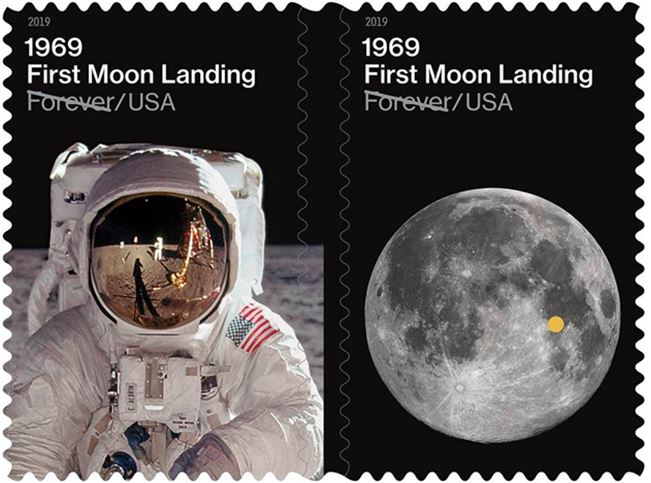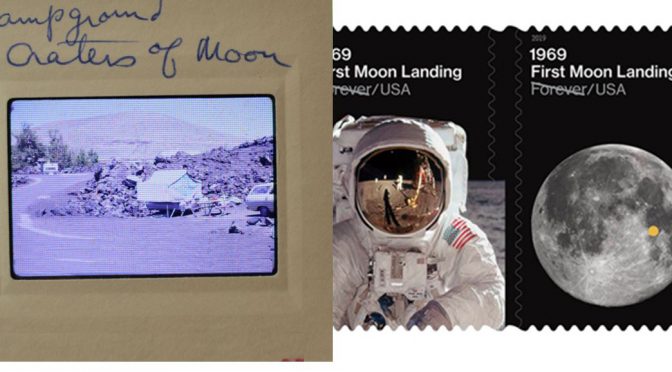It was July 20, 1969. I was 14 years old and visiting/camping at Craters of the Moon National Monument in Idaho with my parents. When we entered the Visitor’s Center a crowd was gathered around a small black and white television set that had been set up on top of the ranger’s desk. The exhibit area across the hall was virtually empty. Everyone was watching two Americans (Neil Armstrong and Buzz Aldrin) conducting experiments and picking up rocks on the moon. The image was blurry on the 14” screen and I was too far away to see much of it, but my thoughts from the day remain intact as the 50th anniversary of that day approaches.
Later that evening the sky was clear and the moon was just a couple of days from being full. We lay in the campground staring skyward. It was probably not possible for a boy about to enter high school to comprehend the enormity of what was occurring on that desolate sphere of rock some 240,000 miles away. I don’t think I fully comprehend the enormity even today.

But to imagine that I was camping with my family in a park called “Craters of the Moon” on that very day. It was not planned that way (or so my dad says). We were on a 5-week summer trip visiting National Parks and Monuments and, as fate would have it, our travels simply had us in Idaho that day.
Of course, Craters of the Moon National Monument technically has nothing to do with the moon. The volcanic cinder cones, spatter cones, lava tubes and volcanic bombs there are products of eruptions that began about 15,000 years ago and ended, at least for now, just 2,000 years ago. But the morphology of the features and the general lack of vegetation in many areas led geologist Harold Stearns to name the region “Craters of the Moon” when the nearly 500,000 acre National Monument was established in 1924.
Fifty years have passed since Armstrong proclaimed “One small step for man, one giant leap for mankind” and you can view moon rocks acquired on the Apollo 11 mission in museums. But later this month will mark a milestone which should not go unrecognized. Although five successful subsequent trips were made between 1969 and 1972, only twelve men have ever left footprints on the moon.
How many of you who are old enough to remember this day know where you were on July 20, 1969?

